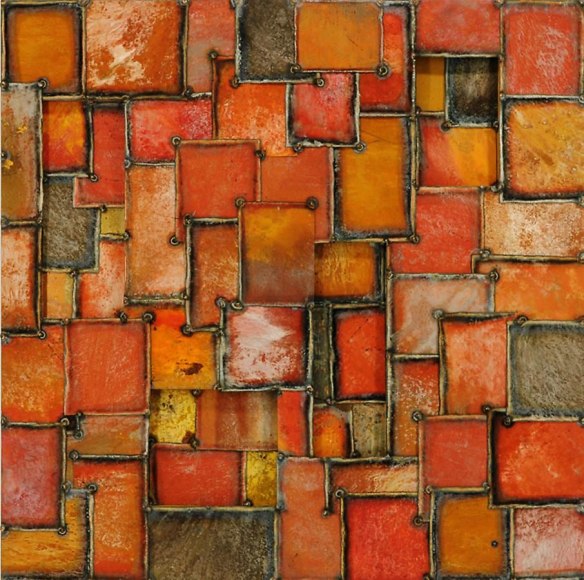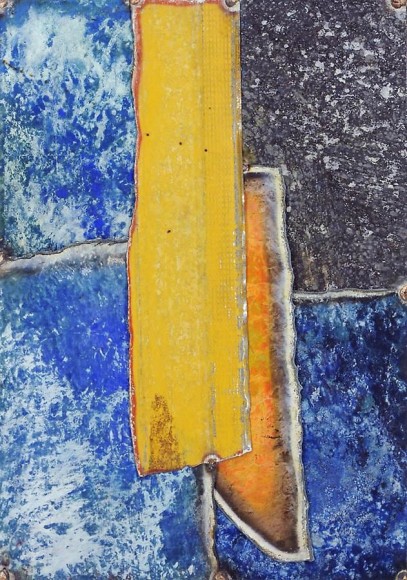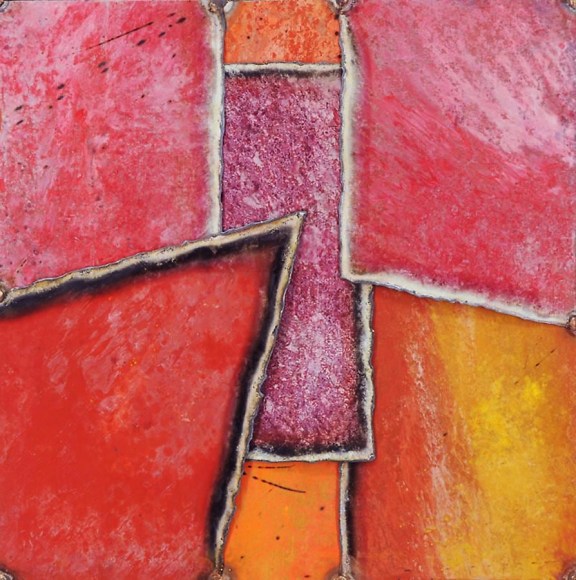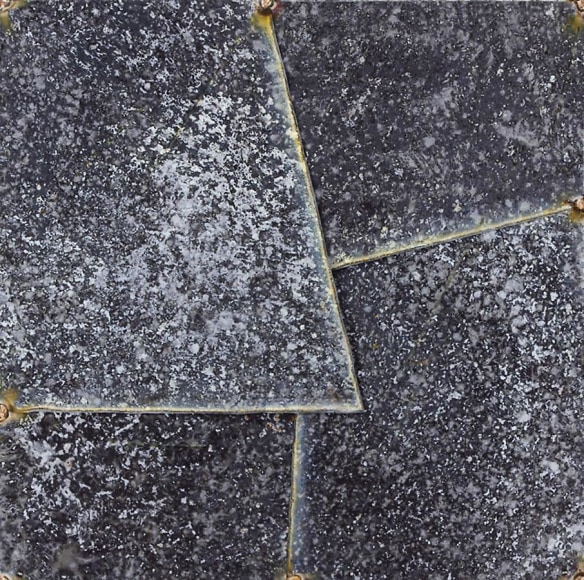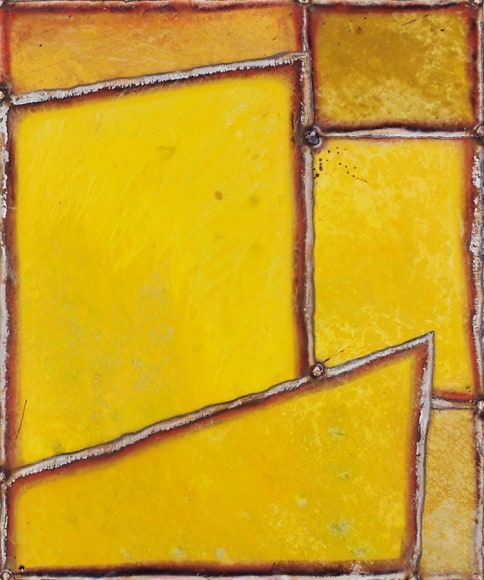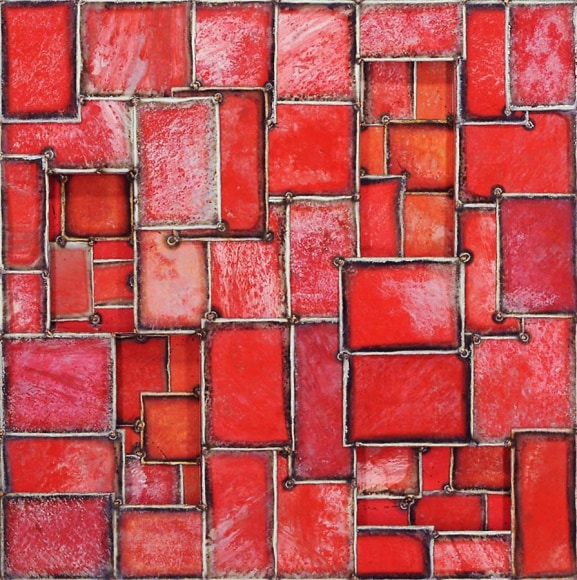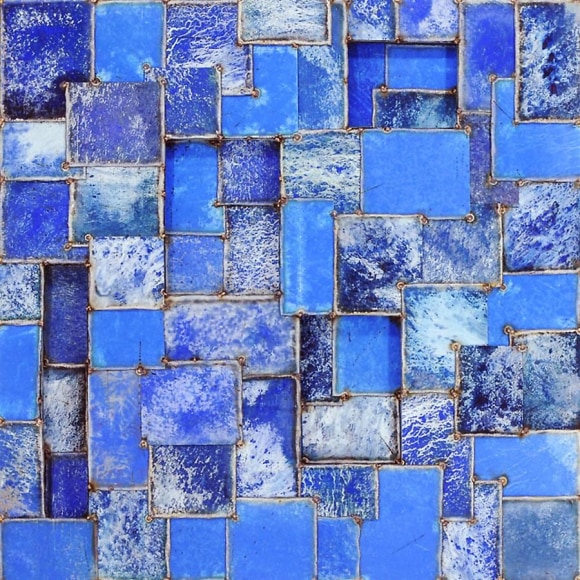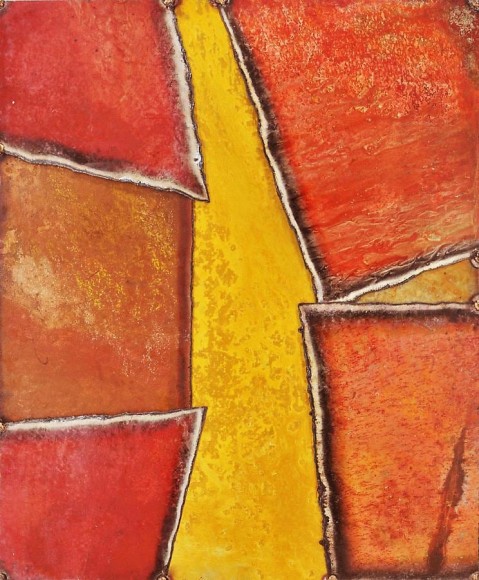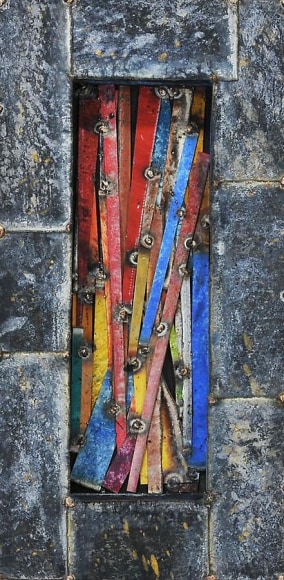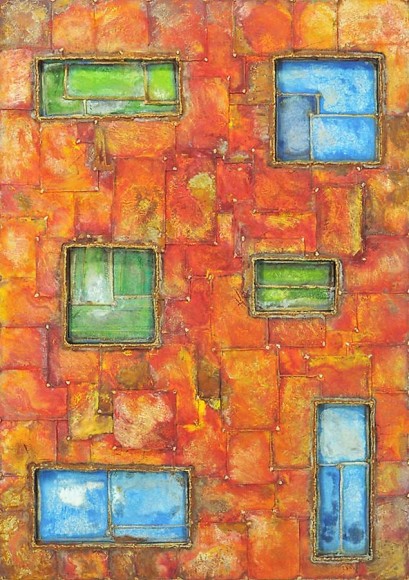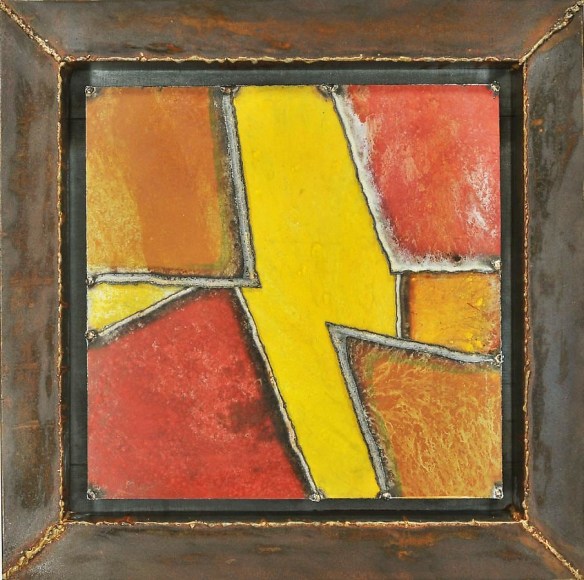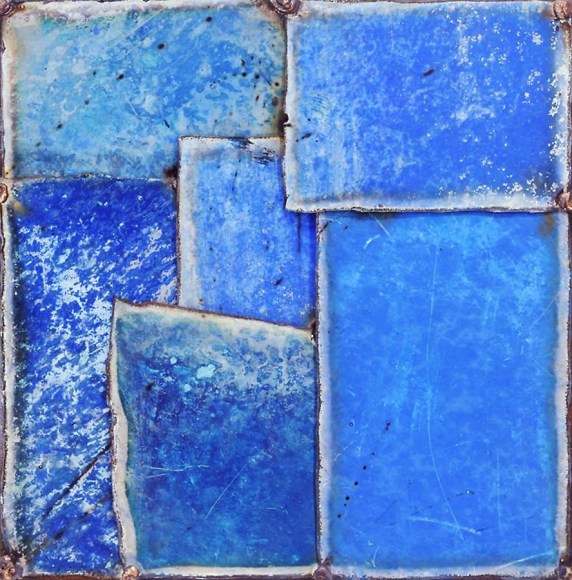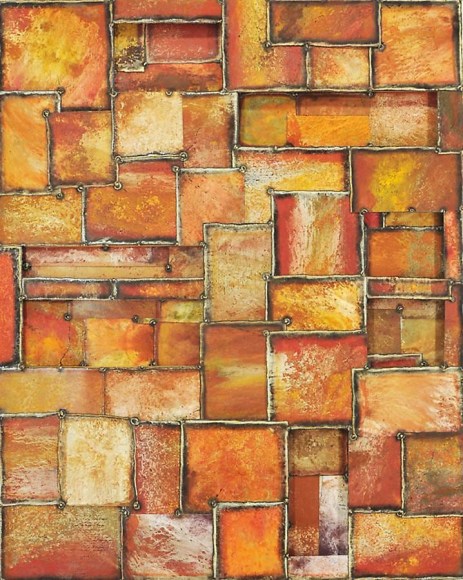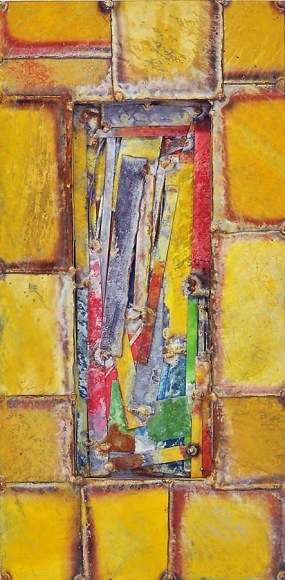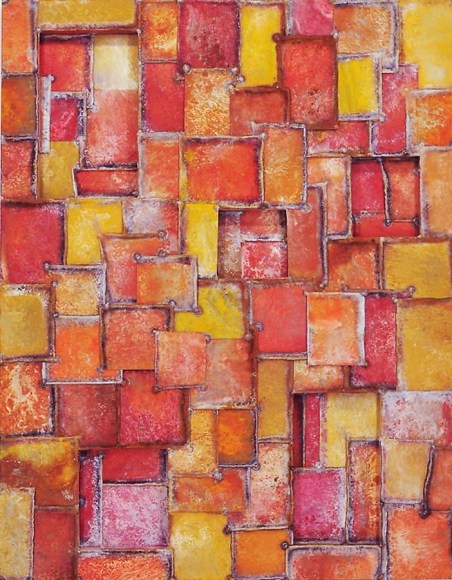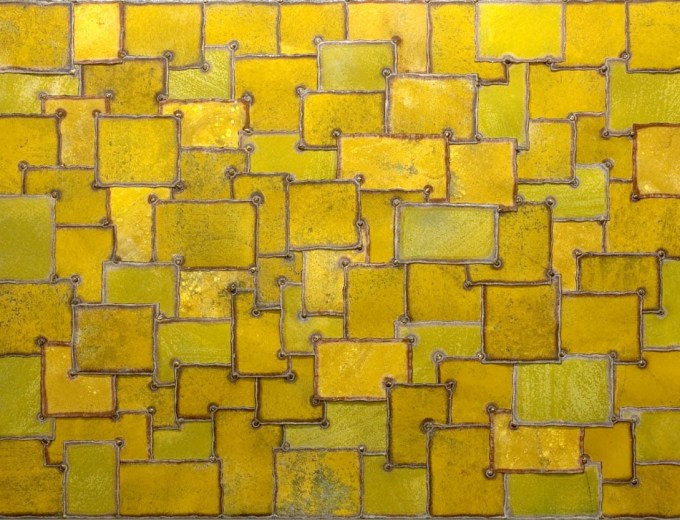
Nathan Slate Joseph introduces a new body of multidimensional works in his latest solo show. The artist, who has been an integral part of the New York School of Art for more than 40 years, continues to blur the boundary between painting and sculpture, combining steel plates and shards into increasingly intricate and dimensional arrangements.
Joseph is well known for his raw and tactile works that allude to issues of globalization, immigration and climate change. He starts his creative process with shards of discarded steel, stains them with raw pigment and acid, and exposes them to the elements in the garden of his studio. In the process, the steel acquires a unique, rich patina and varied textures that occur spontaneously based on the weather. Joseph then cuts the steel plates in rectangular or other shapes with an acetylene torch. These are layered one atop the other and assembled using spot welding.
The rich, saturated colors reference Joseph’s international roots—born in Israel to an Austrian father and a mother whose family originated from Afghanistan and Uzbekistan, he settled in New York City in the early 1960s. Along with contemporaries Frank Stella, Carl Andre and John Chamberlain, Joseph began his career by experimenting with scrap metal and other found objects. A journey to Mexico in the 1970s inspired a shift toward his dramatic color palette. Soon he discovered the technique of applying pure mineral pigment to zinc-galvanized steel, an important breakthrough that has influenced the trajectory of his long career. By incorporating color into his works, Joseph extended the language of the junk art movement. Travels through China, India and Indonesia, where he encountered shantytown dwellers crushing cans and scavenging for materials to make shelters, led to a growing desire to merge urban aesthetics with a concern for nature.
Nathan Slate Joseph’s work is in numerous public and private collections and he is reviewed regularly in publications such as Art in America. He has collaborated with the renowned architect Adam Tihany on multiple projects, and his work is installed at Jean Georges at the Trump International Hotel, New York; Inagiku at the Waldorf-Astoria, New York; onesixtyblue restaurant, Chicago; and the Dan Eilat Hotel, Eilat, Israel. He was awarded an Art in Architecture Award from the American Institute of Architects in 2003 for his work on the Harlem Patchwork Building.
Notable private collectors include artist John Chamberlain, singer-songwriter Joni Mitchell, and chef Jean-Georges Vongerichten. His paintings have been acquired by the Art in Embassies Program, Washington, D.C., for United States embassies in Cyprus, Mexico and Turkey. His work was most recently acquired by the Zimmerli Museum in New Jersey.

